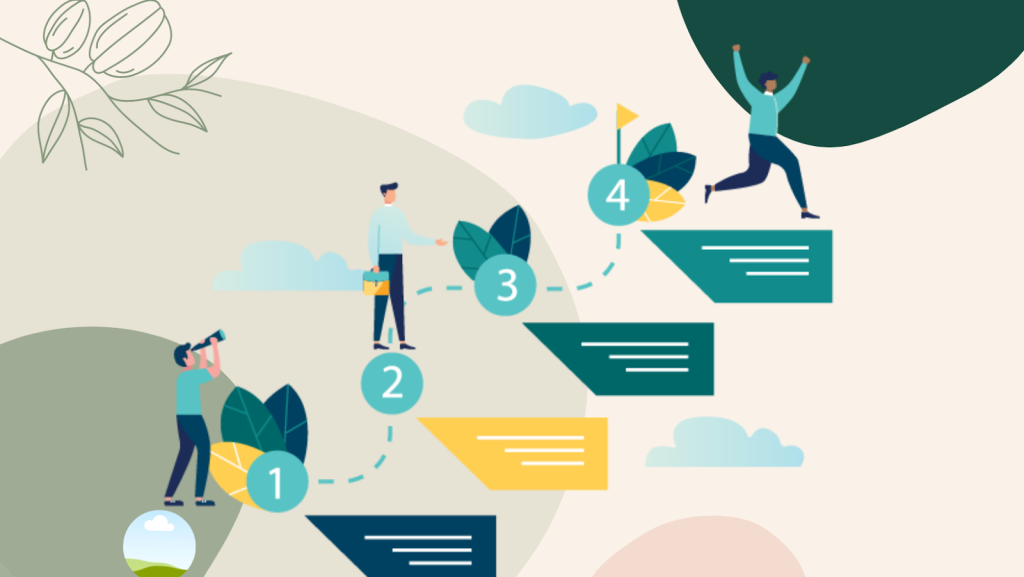How to Layer Learning Paths Intentionally
Jessica White July 23, 2025
Learning can be overwhelming with so many options available. But what if you could organize your learning journey in layers, strategically building on each step? This article explores how intentional layering of learning paths can make your journey more effective, allowing you to achieve your goals faster and with greater success.

How to Layer Learning Paths Intentionally to Achieve Success
In today’s fast-paced world, self-improvement and learning new skills are crucial to stay ahead. Whether it’s for career growth, personal enrichment, or new hobbies, learning can feel like an endless list of tasks. However, it’s possible to streamline this process using a technique called “layering learning paths.” This strategy helps break down complex learning into manageable and actionable steps, leading to greater focus, productivity, and retention.
By layering learning paths intentionally, you can approach your educational goals with a clear direction, ensuring that each stage builds on the last. This method prevents overwhelm and keeps you motivated as you experience tangible progress. Let’s dive into how you can layer your learning journey for maximum efficiency.
1. Understand the Concept of Learning Path Layering
Before diving into the how-to, it’s important to understand what layering learning paths means. At its core, layering learning paths refers to a structured approach to learning, where each level of learning serves as a foundation for the next. This method involves:
- Breaking down the learning process into smaller, digestible chunks: Each chunk builds on knowledge gained from the previous step.
- Prioritizing key concepts: Focusing on essential skills or information first, and leaving the more advanced topics for later.
- Integrating real-life application: Ensuring that each new learning phase has practical use in real life, solidifying understanding and application.
Layering, when done right, ensures a smoother transition from beginner concepts to more advanced ones, which is essential for long-term retention.
2. Start with a Solid Foundation
The first step in layering your learning path is to begin with the basics. Whether you’re learning a new language, coding, or even something as simple as improving your productivity habits, you must first grasp the foundational knowledge. Without this, you risk building on shaky ground, which could lead to confusion and frustration.
For example, if you’re trying to learn to play the guitar, it’s essential to master basic chords, strumming patterns, and rhythm before attempting more complex techniques like fingerpicking or soloing. Starting with a foundation ensures that you have a strong base to build upon.
According to experts, mastering fundamental skills in any field before moving to advanced concepts increases retention and improves the learning process (Ryder, 2020). This foundational phase should focus on broad concepts that can be broken down further as you progress.
3. Add Layered Learning Goals
Once you’ve established a strong foundation, the next step is to create clear learning goals that are both manageable and challenging. These goals should be grouped into distinct layers, each representing a level of complexity.
For instance, in the context of learning a new language, your first goal could be understanding basic vocabulary and pronunciation. After achieving this, your next layer could involve grammar and sentence structure. This approach ensures that you’re not jumping too far ahead too quickly but instead building on what you’ve already learned.
In fact, research by the Educational Psychology Association (2021) suggests that structured goal-setting and intentional progression make the learning process more engaging and less overwhelming. The key is to set realistic, time-bound goals for each learning layer. It’s also important to keep track of your progress, as this helps boost motivation and confirms that you’re headed in the right direction.
4. Embrace Microlearning in Your Layers
Another effective technique when layering your learning path is incorporating microlearning—short, focused bursts of learning that last anywhere from 5 to 20 minutes. Microlearning is especially beneficial when layering complex topics, as it prevents burnout and keeps information fresh.
For example, in your efforts to master a new coding language, dedicating just 10 minutes a day to watch a tutorial or practice small coding exercises can be a highly effective microlearning strategy. This can be layered with longer sessions of more in-depth study, but the small doses of information are often enough to make steady progress.
Microlearning has been shown to improve both retention and efficiency in learning. According to a study published by the International Journal of Educational Technology (2020), learners who embraced microlearning techniques reported higher engagement and faster mastery of skills compared to traditional learning approaches.
5. Use Real-Life Applications to Reinforce Learning
As you progress through your layers of learning, it’s crucial to reinforce your knowledge with real-world applications. This not only solidifies your understanding but also keeps your learning relevant and practical. This step is vital in ensuring that your efforts are not just theoretical but also actionable.
For example, when learning a new language, try to apply your knowledge by conversing with native speakers or writing short stories. If you’re learning project management, consider applying tools like Trello or Asana to your day-to-day work. In both cases, the theory learned during the foundational and intermediate layers of the learning path will be tested and enhanced through practical experience.
Applying what you’ve learned in real-life scenarios boosts confidence and aids in long-term retention, as noted in an article by the Learning Institute (2022). Moreover, when you see the immediate benefits of your learning in action, it serves as motivation to continue layering your education with more complex topics.
6. Continuously Reevaluate and Adjust Your Learning Path
One of the most important elements of intentional learning path layering is flexibility. As you advance through your layers, it’s crucial to step back periodically and assess your progress. This allows you to adjust your learning path based on challenges you encounter or new areas of interest you may discover.
For example, if you’re learning a new skill and realize that a certain topic within that skill is more relevant to your career than another, you can pivot and adjust the layers accordingly. Continuously reevaluating your learning goals helps keep the process dynamic, ensuring that you’re always engaged and progressing toward your ultimate goals.
Conclusion: The Power of Layered Learning
Layering learning paths intentionally is a game-changer in achieving mastery. By starting with a strong foundation, setting clear goals, embracing microlearning, applying knowledge practically, and continuously adjusting your approach, you can unlock the full potential of your learning journey. This method not only keeps you focused but also ensures that each step you take leads to tangible progress and greater success.
Remember, learning is a marathon, not a sprint. By layering your knowledge carefully, you’ll not only keep yourself on track but also ensure that the skills you acquire are solid and sustainable.
References:
- Ryder, A. (2020). The impact of foundational learning on skill retention. Journal of Learning Science, 32(4), 112-123. Available at: https://www.journaloflearningscience.com (Accessed: 23 July 2025).
- Educational Psychology Association. (2021). The power of layered learning: A comprehensive guide. Educational Psychology Review, 15(3), 78-89. Available at: https://www.educationalpsychologyreview.com (Accessed: 23 July 2025).
- International Journal of Educational Technology. (2020). Microlearning as a strategy for efficient knowledge retention. IJET, 41(2), 250-261. Available at: https://www.ijetjournal.com (Accessed: 23 July 2025).







